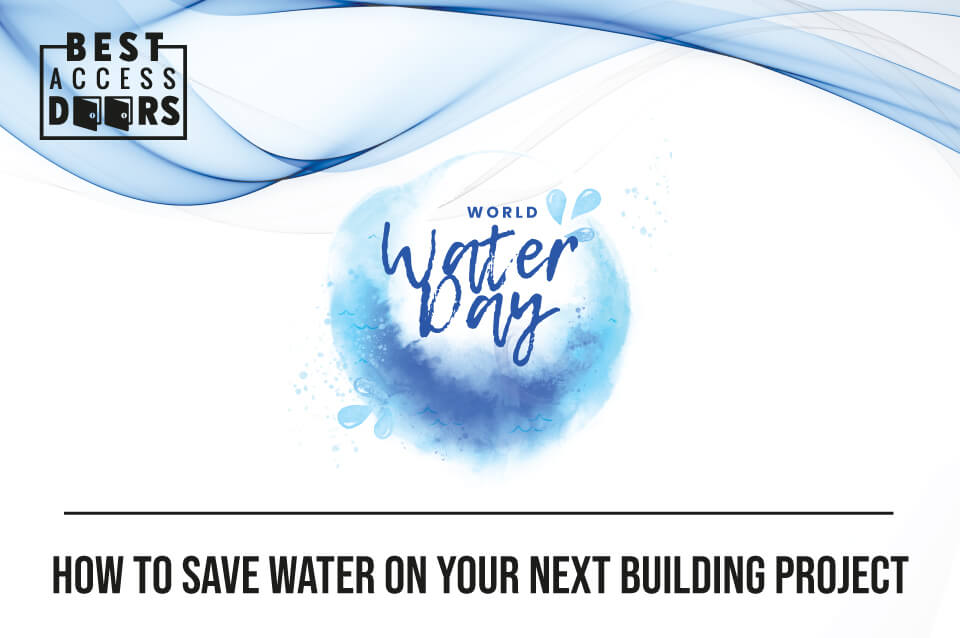How to Save Water on Your Next Building Project
Posted by Best Access Doors on 16th Mar 2022
Sustainability is a strong movement that drives the construction industry. It seeks to conserve resources and utilize environmentally friendly or renewable materials to answer the pressing issue of global warming. Because of its many advantages, including cost reduction, many companies now see sustainable construction as an enticing alternative to traditional building.
One of the most critical resources utilized by everyone is water. Without it, most life forms will be unable to function or survive. However, the demand for this resource steadily increases due to populations climbing each year, resulting in more needs for infrastructure and manufactured products that typically use water for their production.
The most challenging is how to save water on your building project. Efficient water use during construction is always the aim of sustainable construction to conserve as much of the resources as possible when building with sustainability in mind. As World Water Day reminds us about our obligation to protect such a valuable asset, how does a building project save or make efficient use of water?
Planning a Water Efficient Design
ntegrating water-saving ideas into all areas of a project from the start is the most cost-effective strategy to achieve water efficiency. Develop a water-saving strategy plan that includes activities taken during construction, installation of appliances and pipes, possibilities for water reusing and conservation, landscaping, and rainfall use. Ensure to address water quality and conservation protection in all contract and tender documents.
Keep up with the most recent developments in water-saving design and equipment. Instead of a pricey concrete drainage system, utilize natural drainage swales when constructing a greenfield site. Construct drainage networks that channel the dirty 'first flush' into trade waste and enable the pure water to run into pond systems, drainage swales, or tanks. You must also utilize a design feature for a residential structure that would likely result in reduced water use whenever possible.
Plan Your Designs With People in Mind
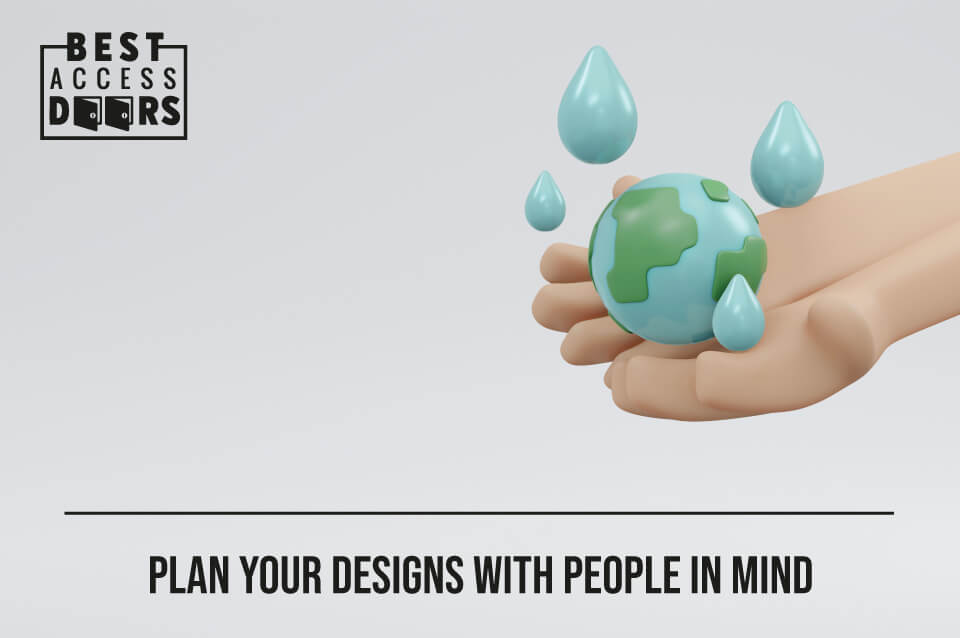
Make water conservation a top priority for the project, and make sure that everyone engaged understands their obligations. Educate new workers and contractors with an orientation program to make them aware of their responsibilities and the program's advantages.
Maintain a plan copy of the water conservation during construction on-site, and make sure that all personnel are aware and have access to it. At frequent meetings, talk about water management. Take account of your ongoing accomplishments. Public relations to local or online media and professional organizations will help you publicize your achievements.
During On-Site Construction
Keep as much foliage as feasible during construction to minimize evaporation. The top recommendation is to utilize irrigation systems that use less water. It would be best for clearing paths and drains to require employees to use a broom instead of a hose. If there's a requirement for water, utilize high-pressure hoses, which are efficient and effective cleansers. Instead of running water, use buckets to clean instruments.
Protecting Water Quality
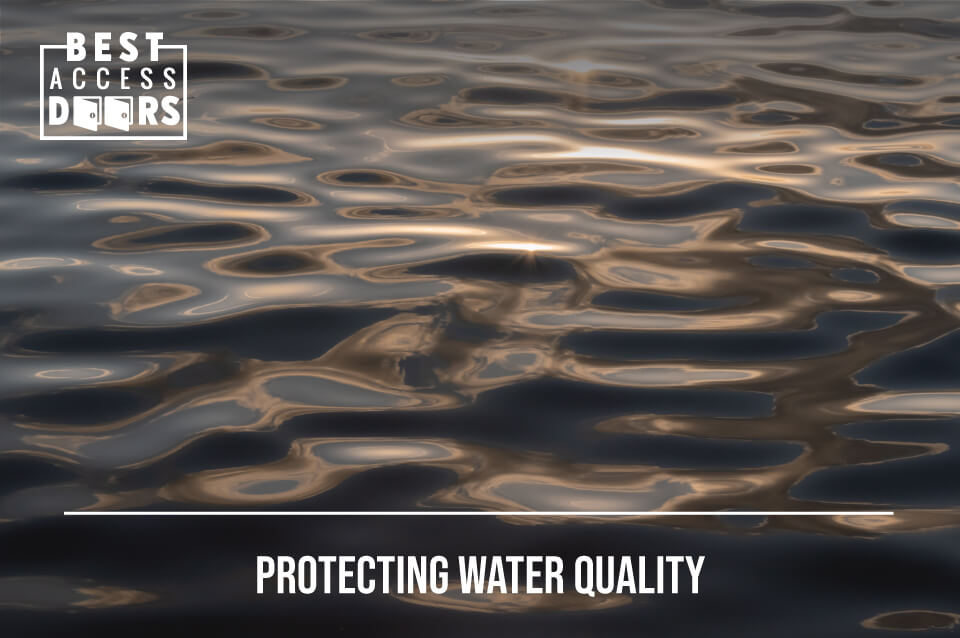
Plan to lessen any disruptions to vegetation, waterways, wetlands, and disturbance should be as little as possible. Manage your efforts so that no sand, soil, or cement mixture from your site ends up in the drain or gutter, polluting the stormwater runoff system, nearby creeks, or waterways. To prevent trying to clean the material away with water, ensure to not do cement work on roads or paths.
You can use a temporary barrier and hay bales to fence the premises. Consider using silt fencing made of geotextile. You must also install and maintain sediment and erosion control equipment by channeling runoff at periodic intervals using contours, baffles, bales, and mounds or preserving foliage. These measures can lower water velocity on site. It would help if you cover or filter stormwater inlets and drains.
You must clean and maintain all stormwater protection devices regularly. Avoid using construction materials that harm water, such as asbestos or PVC. You can stockpile and cover construction materials to keep them away from drains and roadways. If the materials
Plumbing Fixtures and Installations
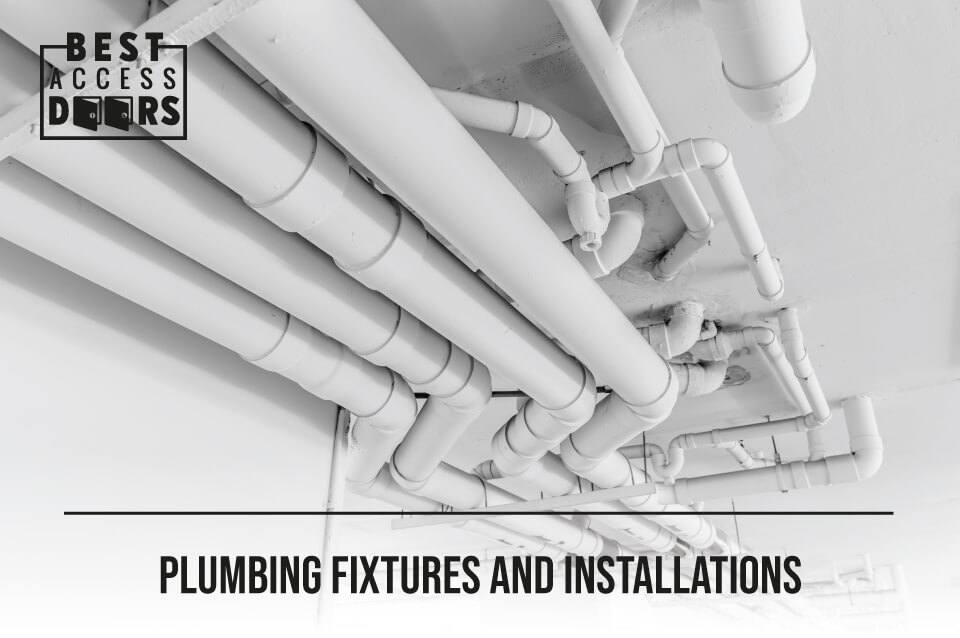
Reduce travel time between hot water cylinders and faucets to save on needless piping and electricity. Fixtures should have modest flow rates and maximum levels of variation. Plumbing fixtures with built-in flow restrictors are the best option. Install equipment and fixtures with the most significant attainable water efficiency rating, or composting or waterless toilets and urinals, if practicable.
Maintain these fixtures and equipment by installing access doors and panels for convenient and safe entry. It protects critical access points against unauthorized entry or damage from nature's elements, ensuring that these areas (which typically house your valves and other master controls) have the protection they require. One of the most recommended models is the BA-AHD from Best Access Doors.
Reuse Water
Collect rainwater and store it in ponds, dams, tanks, pools, or underground tanks for future use. Consider recycling wastewaters from baths, showers, sinks, and washers and dryers to flush restrooms or water plants. Keep in mind that adequate maintenance of these systems is critical, as lousy maintenance can result in poor water quality, harmful to human and environmental health.
If wastewater utilization isn't possible now, you can design water conservation in architecture and plan your plumbing to accommodate future changes.
Road and Carpark Designs
It would be best to utilize natural drainage swales in undeveloped plots instead of expensive concrete drainage pipes. By minimizing the use of Kerbing and diverting discharge into recharge zones, you can collect rainwater from parking lots. You can use graded rock terracing, permanent ponding basins, or vegetated or landscaped swales as recharge zones.
Design paved areas and ground surfaces to slant away from buildings, allowing water to drain into nearby recharge zones and garden areas. It will also help if there is a design feature for a residential structure that would likely result in reduced water use.
Landscape and Garden Designs
Gardens and landscapes can benefit from Xeriscape gardening principles. In comparison to traditional designs, this technology utilizes less water. You must use irrigation systems that save water in conjunction with mulch in flower gardens and around plants. Increase water infiltration to replenish groundwater.
To capture water and reduce evaporation, use rainwater collectors and pool covers. You can also utilize plants that require little water and are adaptable to the climate of their environment.
Other Ways of Conserving Water
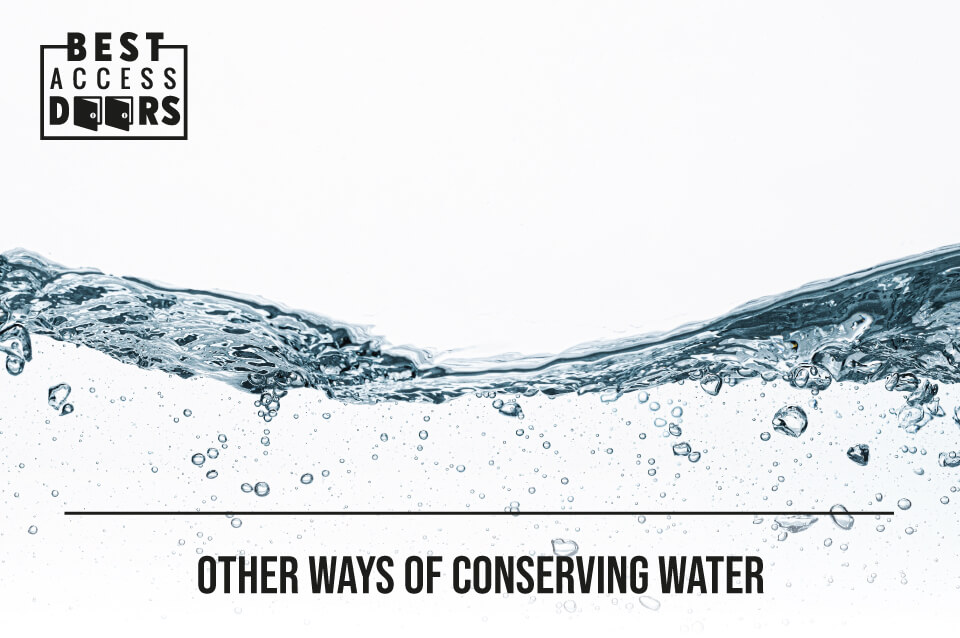
Graywater
Graywater can significantly reduce water sources required for toilet flushing, landscaping irrigation, and other non-drinking water. Collaborate with local water administrations to communicate the significance of gray water collection and the advantages to them and their communities to boost gray water recovery and utilization. Many areas may need a permit to source plumbing fittings with non-potable water.
Extreme Weather Conditions
Extreme weather conditions will strain water delivery infrastructure and wreak havoc on facilities near water bodies. Incorporate sustainable development principles into such systems and stormwater management before any reconstruction after these events happen.
If your area has severe droughts in various sections of the region, it would be best to minimize water consumption in these locations. Water conservation building design and water infrastructure and facilities will help regulate water in said areas.
Decrease Electricity Consumption
Generating electricity consumes a lot of water; lowering the amount of electricity utilized will also reduce the volume used for power generation. Water extraction, distribution, pumping, transmission, irrigation, production, and wastewater treatment, on the other hand, all require electricity. Reducing the amount of water used reduces the amount of electricity needed by the power plant to generate electricity.
Dry Fire Hydrants
A dry fire hydrant is one of the complementary solutions for water conservation and fire protection. These are non-pressurized vacuum pipe systems permanently installed in lakes or ponds that battle fires using greywater rather than treated water.
They help fire departments be more effective by delivering proximate water sources to fire hazards in regions that lack typical fire suppression systems. They are also excellent in locations that cannot manage vast amounts of water due to obsolete systems or low water pressure during peak demand.
Dry hydrants can deliver water in the event of natural disasters such as tornadoes, floods, and hurricanes when power lines are down. Their use extends to severe hot or cold conditions when standard hydrant pipes can break or freeze because their installation is below the effect line and does not require electricity.
In addition, by using rainwater that does not require treatment before being used to combat fires, dry fire hydrants help conserve drinking water and energy.
Passive Survivability
The ability of a facility to sustain vital life-support conditions in the case of a prolonged loss of electricity, water, or heating fuel is what they call passive survivability. This concept suggests that during and after a calamity, whether it be a hurricane that causes a power failure, a drought that restricts water supplies, or any other potential disaster, designers should integrate means for a structure to maintain sheltering occupants for an extended length of time.
Passive survivability is a relatively new disaster recovery and business continuity strategy. Assuring that an on-site water storage system can withstand a natural disaster allows a company to continue operating during the disaster or quickly resume operations after that.
Installations like the general-purpose access doors and panels can help protect critical utility areas of your building from damage, allowing your personnel to conduct emergency maintenance if needed. It will prolong the life-essential functions of your structure. You can choose from various models if you have specific requirements, like the BA-AHD model.
Waste Water and Sanitary Systems
Some older cities still have integrated storm and sanitary sewer lines, which can rapidly overwhelm sewage treatment plants during storms. When the systems get overburdened, it may become necessary to dump raw sewage directly into rivers. Water conservation in buildings and greywater recycling can help lessen the sewage strain on treatment systems.
Takeaways
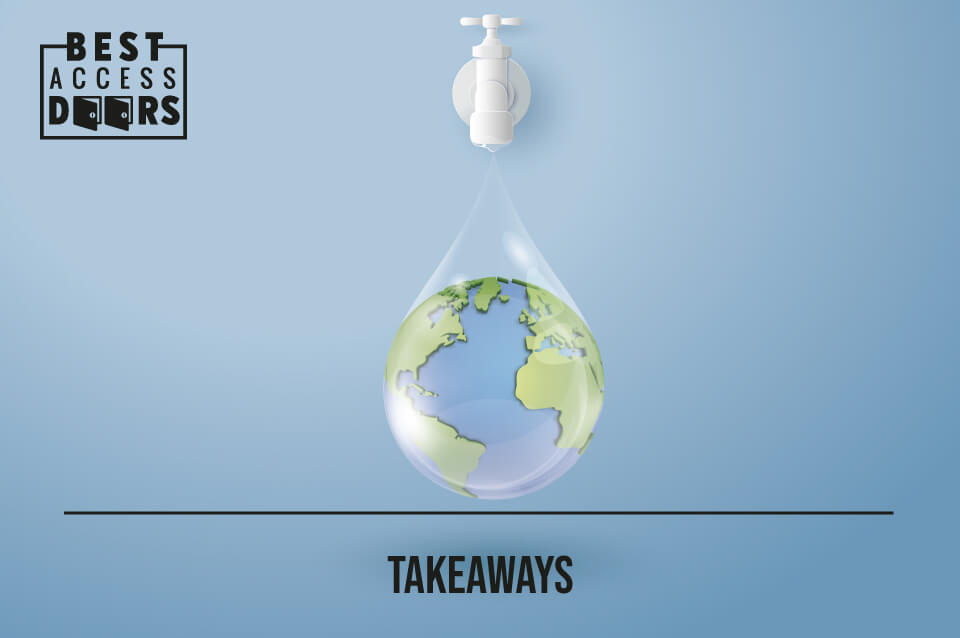
Water conservation is a must for the current construction industry. Advancements towards better water conservation technologies and strategies will impact more sectors and lives in the future. You'll need the guidance of an expert for their professional opinions if you need to stay up-to-date with such developments.
If you need to purchase high-quality access doors and panels, you should choose Best Access Doors all the time! You can also get in touch with us at (800) 483-0823 if you have other inquiries or need to learn how our products can benefit your project. We will always strive to provide top-quality products and services to all of our clients!
Share our story - get our 2024 Catalog for FREE!

